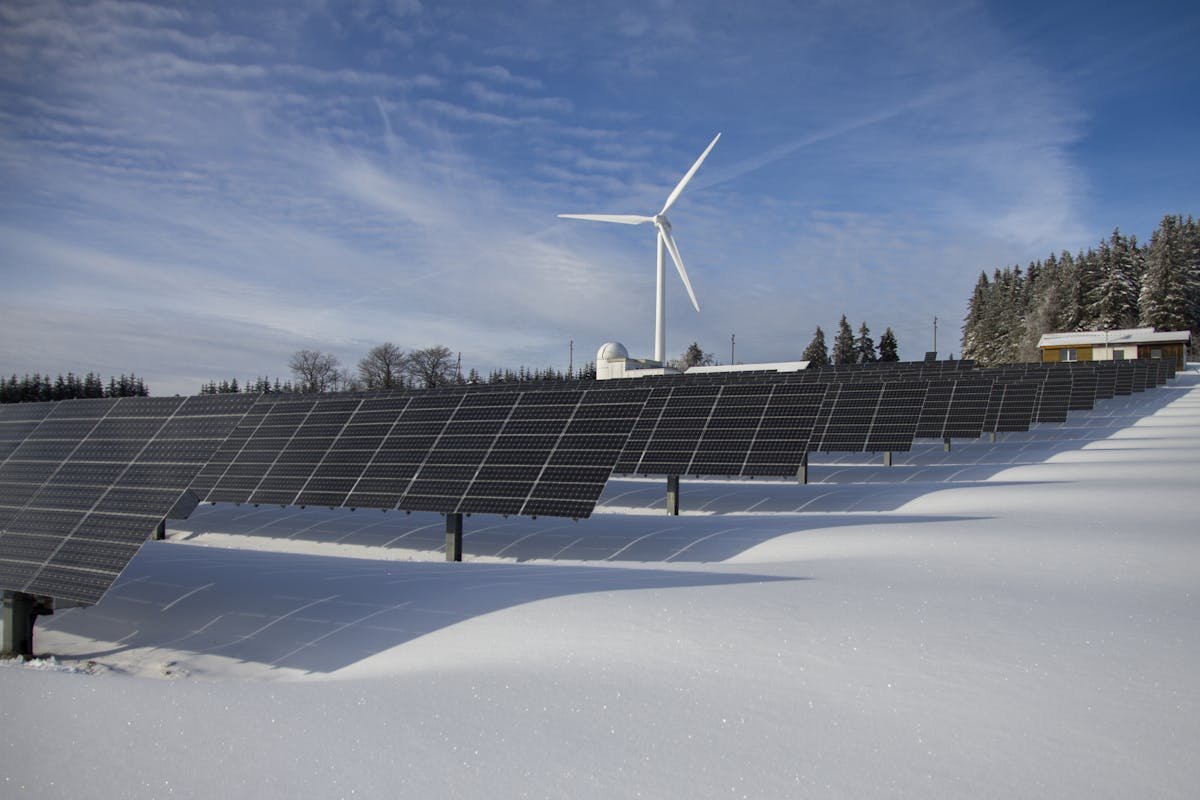Forget Solar Panels—The Clean Energy Revolution Is Already Leaving Them Behind
Future of Energy & Resources / Date: 05-24-2025

Let’s start with a bitter pill: solar panels won’t save us. Not alone, at least. For all their promise, they still rely on lithium, suffer from cloud cover, and—get this—can’t even power your house 24/7 without expensive batteries. Sound like a silver bullet to you? Didn’t think so.
In this article, you’re not getting another feel-good piece about how the sun will fix everything. Nope. This is about what comes next—from nuclear diamonds to sky-fueled generators. We’ll rip apart the solar hype, dig into a clean-energy disaster that cost a major tech firm millions, and uncover the mind-blowing tech that might just reshape energy forever. Buckle up.
Solar’s Dirty Secret: Why It’s Not the Messiah of Energy
A 2024 McKinsey sub-study quietly pointed out something most solar evangelists won’t say out loud: the manufacturing process for solar panels emits more carbon than they save during their first few years of use—especially when they’re made in coal-reliant regions like parts of Asia. So… how’s that for clean?
Then there’s storage. Without batteries (which, by the way, require lithium mining that scars entire ecosystems), you’re out of luck once the sun goes down. And have you seen lithium prices lately? Spoiler: they’re not going down.
Also, solar panel waste is projected to reach 78 million tons by 2050, according to the International Renewable Energy Agency. Yet, there's no robust recycling system in place. Let that sink in: the tech that’s supposed to save the Earth might just end up drowning it in toxic junk.
When Betting on Green Went Red: How EnerNext Lost $75M on Bad Tech
Let’s talk about EnerNext, a Silicon Valley clean-tech firm that was supposed to "reinvent energy." Big promises. Big investors. Big crash.
In 2023, EnerNext poured $75 million into a graphene-solar hybrid panel system designed to work in low-light urban environments. Fancy, huh? The problem? It relied on experimental materials with zero large-scale production capacity.
By mid-2024, EnerNext couldn’t even deliver on 20% of its pilot contracts. Clients—ranging from municipal buildings to remote hospitals—were left in the dark. Literally. Investors bolted. Lawsuits flew. The CEO disappeared from social media faster than a crypto bro in a bear market.
The kicker? A leaked internal memo (confirmed by a former engineer on the Techtonic Shift podcast) admitted the tech was never scalable past lab conditions. Oof.
Lesson learned? Chasing buzzwords like “green graphene” without real-world proof is a fast track to bankruptcy—and a dead planet.
The Energy Disruptors Nobody’s Talking About—Yet
Okay, enough doom. Let’s talk breakthroughs. Real ones. Quiet ones. The kind still buried in academic papers or obscure startup accelerators in Finland and South Korea.
1. Nuclear Diamond Batteries (NDBs)
Yes, you read that right. Batteries. Made from diamonds. But here’s the real twist—they’re powered by nuclear waste.
Researchers at the University of Bristol first whispered about this tech back in 2016. But now in 2025, NDB Inc. claims to have developed a prototype with a 28,000-year lifetime. That’s not a typo. Twenty-eight thousand. Imagine charging your phone once… and then handing it down to your great-great-great-grandkid. Wild, huh?
These batteries aren’t for homes—yet—but they’re perfect for satellites, pacemakers, or even military outposts where swapping batteries isn’t really an option. Still think solar’s the future?
2. Hydrogen from Air Moisture
Forget oil rigs—future energy might be farmed from the sky.
A team at the University of Melbourne unveiled a working system in 2024 that pulls hydrogen—yes, actual fuel—from ambient air moisture using solar-assisted electrolysis. Even in desert climates with low humidity, it pulled enough hydrogen to power a home appliance for hours.
And unlike traditional hydrogen production, which requires huge amounts of water and electricity, this system is self-sustaining. No pipes. No waste. Just clean energy from thin air.
3. Ocean Thermal Energy Conversion (OTEC)
Here’s the underdog. OTEC produces energy by utilizing the temperature differential between chilly deep water and warm surface saltwater. Sounds simple, right? It is. But engineering it on a big scale was always the hurdle—until now.
At CES 2025, a Samsung engineer casually mentioned their black-ops division was working with Caribbean nations to launch the first floating OTEC city-grid prototype. If it works, it could power entire islands without burning a single fossil molecule.
Here’s What You Can Actually Do (Without Buying More Solar Panels)
Look, you don’t need to wait for nuclear diamonds or sky-fueled hydrogen to drop in your backyard. Here’s what you can do—right now—to be part of the real clean energy future.
1. Ditch Lithium, Embrace Salt
Yes, salt. Lastly, sodium-ion batteries are beginning to catch up to their lithium-based equivalents. They are less costly, less flammable, and made of a variety of materials. The massive Chinese battery manufacturer CATL started mass-producing sodium-ion batteries at the beginning of 2025. Ask your installer if your home system can switch to sodium. If they look confused—find a better installer.
2. Go Microgrid or Go Home
If you're still tied to a central grid, you're vulnerable. Microgrids—localized energy networks—are exploding across Germany and parts of California. They let communities (or just neighborhoods) generate, store, and share energy on their own terms. Want to see real resilience? That’s where it’s at.
3. Vote Like the Grid Depends on It (Because It Does)
No shade, but individual actions won't solve this alone. Policy shapes energy markets. Vote for leaders who back grid decentralization, battery innovation, and open energy data—not just the ones who promise “solar panels for everyone” and call it a day.
Follow Us
Newsletter
Subscribe to our newsletter to stay updated with our latest news and offers.
We respect your privacy.Trending










